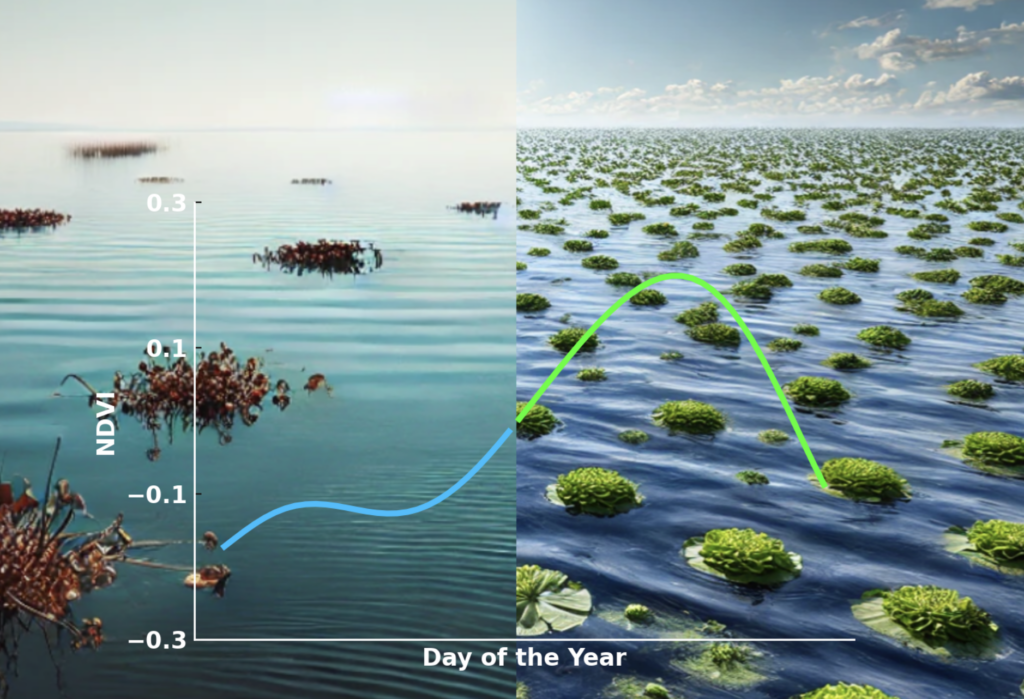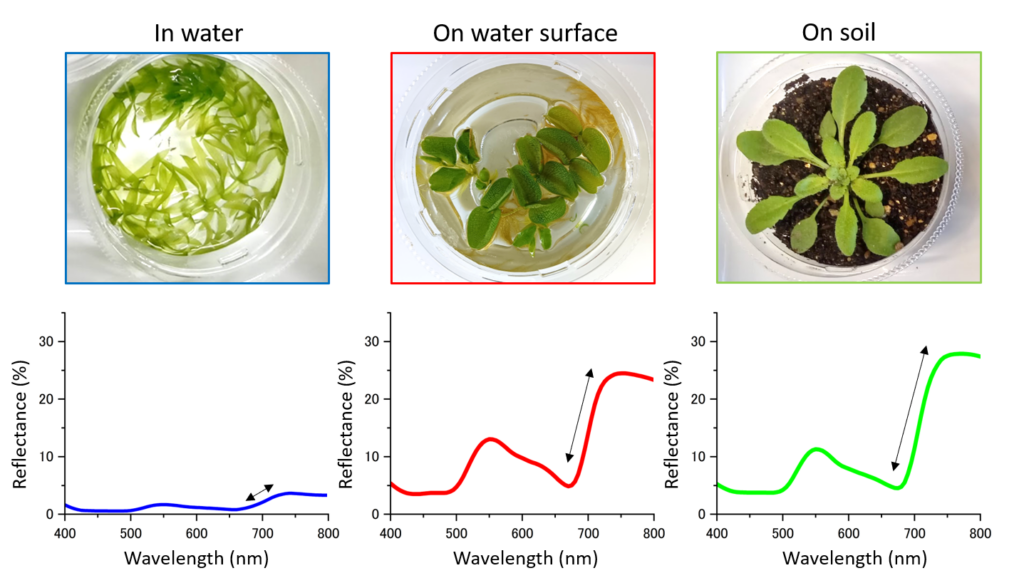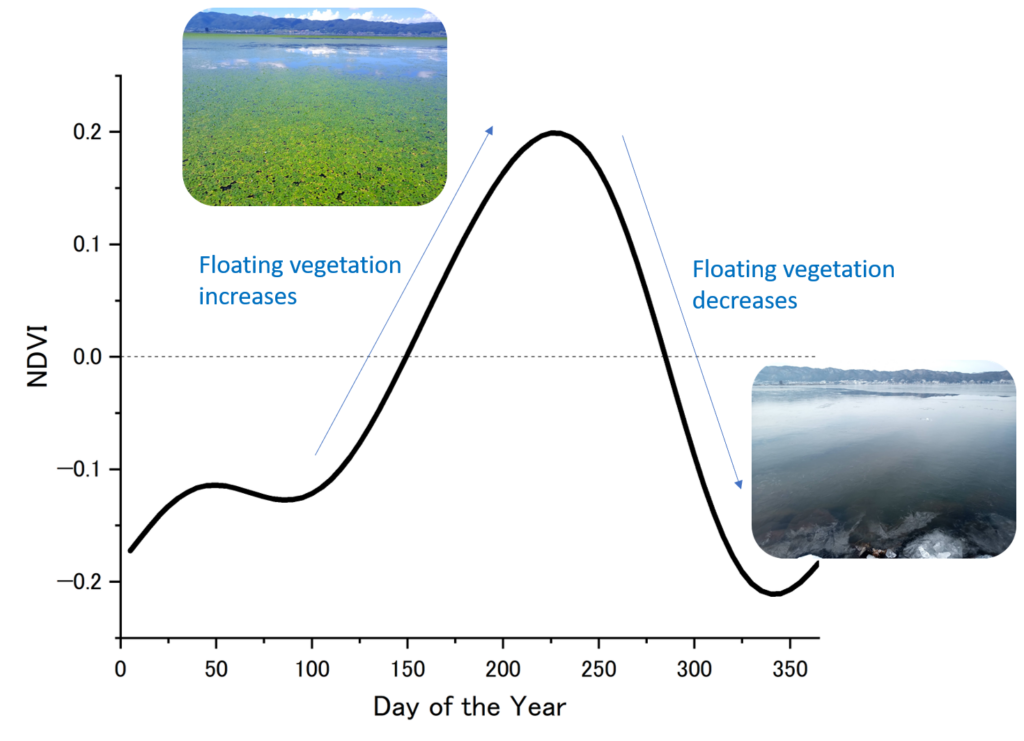
Summary
Recent advances in astronomical observations have found a significant number of extrasolar planets that can sustain surface water, and the search for extraterrestrial life on such planets is gaining momentum. A team of astrobiologists from Astrobiology Center, National Institute for Basic Biology, and SOKENDAI have proposed a novel approach for detecting life on ocean planets. By conducting laboratory measurements and satellite remote sensing analyses, they have demonstrated that the reflectance spectrum of floating vegetation could serve as a promising biosignature. Seasonal variations in floating vegetation may provide a particularly effective means for remote detection.The results of this research will be published in the journal Astrobiology on February 2, 2025.
Background
Astronomical surveys have discovered nearly 6,000 exoplanets, including many habitable planets, which may harbor liquid water on their surfaces. The search for life on such planets is one of the most significant scientific endeavors of this century, with direct imaging observation projects currently under development.
On Earth-like planets, the characteristic reflectance spectrum of terrestrial vegetation, known as “vegetation red edge”, is considered as a key biosignature. However, ocean planets, with most of their surfaces covered by water, are unlikely to support terrestrial vegetation. To broaden the scope of life detection on ocean planets, this study examined the characteristics of reflectance spectra from floating plants and tested their detectability.
Results
The study investigated the reflectance spectra of floating plants across different scales, from individual leaves in laboratory settings to large-scale observation via satellite remote sensing of lake vegetation.
Although floating leaves exhibit considerable morphological variation among species, their general trend reveals a pronounced red edge, often comparable to or even exceeding that of terrestrial plants. This enhancement is attributed to air gaps in sponge tissue that provide buoyancy and specialized epidermal structures that offer water repellency. While floating leaves show slightly reduced reflectance when wet, they still display a more distinct red edge than submerged water plants (Figure 1).

However, on a larger scale, the red edge signature of floating vegetation weakens due to lower vegetation density and reduced leaf overlap on the water surface. Landscape-scale analyses using satellite remote sensing (Sentinel-2; ESA) with the Normalized Difference Vegetation Index (NDVI) flourishes in summer and disappears in winter, causing the NDVI to be relatively low when averaged over the year. Nevertheless, the fluctuation between minimum and maximum NDVI values is more pronounced for floating vegetation compared to forests. To further investigate this pattern, a large-scale survey of 148 lakes and marshes across Japan was conducted. The study revealed a characteristic seasonal NDVI variation, shifting from negative values in winter to positive values in summer (Figure 2). Importantly, while water suppresses the reflectance of floating vegetation, its own reflectance is even lower and remains stable. It enhances the detectability of seasonal NDVI fluctuations, which remain robust against atmospheric and cloud interference, suggesting that this method could be promising for detecting life on habitable exoplanets in the future.

Perspectives
If photosynthetic organisms, such as floating plants, exist universally on habitable exoplanets, then the scope of life exploration can be expanded to include ocean planets rather than being limited to Earth-like planets. It is important to understand the origin and evolutionary process of life as it coevolves with planetary environments to predict the morphology of organisms that may adapt to diverse planetary conditions. This study provides a foundation for future research on biosignatures, paving the way for the next generation of life-detection missions.
Description of Keywords
Exoplanet: A planet beyond our solar system. Future telescopes aim to detect reflected light from the exoplanet, potentially revealing signatures of vegetation.
Floating vegetation: A plant community in lakes and marshes composed of aquatic plants with leaves floating on the water’s surface. In this study, floating vegetation includes both free-floating plants and emergent plants extending leaves and stems above water.
Red-edge: A unique spectral feature of plants marked by a sharp increase in reflectance between red light and near-infrared light (around 700 nm).
Normalized deviation vegetation index (NDVI): A vegetation index used in remote sensing, calculated as follows:
NDVI = (NIR – Red) / (NIR + Red)
where NIR represents near-infrared reflectance and Red represents red-light reflectance.
Publication
Journal; Astrobiology
“Remote Detection of Red-Edge Spectral Characteristics in Floating Aquatic Vegetation”
Authors: Aoi Murakami, Yu Komatsu, and Kenji Takizawa
DOI:10.1089/ast.2024.0127
URL: https://doi.org/10.1089/ast.2024.0127

